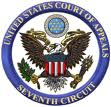Lenity and Mandatory Minimums
This is the third in a series of posts reviewing last term’s criminal cases in the Supreme Court and previewing the new term.
Three of last term’s criminal cases dealt with mandatory minimum sentencing statutes, as do two of the new term’s. The frequency with which these cases reach the Supreme Court underscores how ubiquitous mandatory minimums have become in federal criminal practice — a truly unfortunate state of affairs, given how clumsily these statutes are drafted and how badly they depart from sound sentencing policy. In any event, an interesting question lurking in the background of many of these cases is whether the rule of lenity should be applied in the same manner as it would be in a case involving a conventional criminal statute.
The rule of lenity indicates that ambiguous criminal statutes should be interpreted in favor of the defendant. As I suggested in my previous post, the Court does not seem especially consistent in its application of lenity and often adopts the government’s interpretation of statutes that strike me as clearly ambiguous (if that is not an oxymoron). A good example from last term is United States v. Hayes, 129 S. Ct. 1079 (2009). I agree with the conclusion of Chief Justice Roberts’s dissenting opinion: “This is a textbook case for application of the rule of lenity.”
In comparison with other criminal statutes, I have not detected any difference in the Court’s application of lenity to mandatory minimums. Last term, though, Justice Breyer offered an interesting argument that the rule of lenity has “special force in the context of mandatory minimum provisions.”

 As a Catholic whose views are in line with those of Pope Benedict XVI, US Supreme Court Justice Antonin Scalia personally opposes abortion.
As a Catholic whose views are in line with those of Pope Benedict XVI, US Supreme Court Justice Antonin Scalia personally opposes abortion. So, the Heller revolution may have legs after all. In District of Columbia v. Heller, 128 S. Ct. 2783 (2008), the Supreme Court breathed new life into the moribund Second Amendment, holding that there is indeed an individual right to bear arms. Heller seemed to mark a major shift in Second Amendment jurisprudence and cast a shadow over much gun control legislation. On the other hand, the Heller Court was remarkably coy about many aspects of the individual right to bear arms, leaving open the possibility that Heller would prove no more than a flash in the pan.
So, the Heller revolution may have legs after all. In District of Columbia v. Heller, 128 S. Ct. 2783 (2008), the Supreme Court breathed new life into the moribund Second Amendment, holding that there is indeed an individual right to bear arms. Heller seemed to mark a major shift in Second Amendment jurisprudence and cast a shadow over much gun control legislation. On the other hand, the Heller Court was remarkably coy about many aspects of the individual right to bear arms, leaving open the possibility that Heller would prove no more than a flash in the pan.